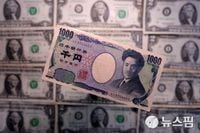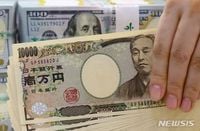The Yen is weakening due to the Bank of Japan's (BOJ) interest rate freeze and expectations of progress in US-China trade negotiations, reaching its lowest level in three weeks. The currency was trading at 145.49 to 145.51 Yen per dollar in the Tokyo foreign exchange market on May 2, 2025, down 1.13 Yen from the previous day. This decline follows the BOJ's decision to keep the key interest rate unchanged during its monetary policy meeting on May 1, 2025. Additionally, the BOJ adjusted its economic and price forecasts, leading to waning expectations of a near-term interest rate hike.
According to Hiroshi Suzuki, chief foreign exchange strategist at Sumitomo Mitsui Banking Corporation, the fading expectations for a BOJ interest rate hike are contributing to the Yen's decline. He noted, "Expectations for a BOJ interest rate hike have waned, and with the US-Japan negotiations not addressing exchange rates, there is a sense of relief regarding dollar purchases amid hopes for progress in US-China tariff negotiations."
On the same day, China's Ministry of Commerce announced that it is reviewing the possibility of trade negotiations with the US. Akazawa Ryoma, the Ministry of Economy, Trade and Industry's economic and industrial policy bureau chief, confirmed that exchange rates were not discussed during the second US-Japan trade negotiation.
Jun Tarumoto, a senior analyst at Sony Financial Group, commented on the potential impact of upcoming US employment figures, stating that if the data released later on May 2, 2025, shows poor results, the dollar's rise could be limited. He remarked, "It is difficult to see the US tariff negotiations progressing smoothly, which makes it challenging to actively continue buying dollars. However, extreme pessimism regarding the dollar has ended, indicating a strong trend, although the increase may not be significant."
Kato Katsunobu, Japan's Minister of Finance, discussed the Yen's exchange rate on a TV Tokyo program on May 2, 2025. He mentioned that Japan has sufficient options for trade negotiations with the US, but the foreign exchange market's reaction has been limited. Yuji Sasaki, a senior foreign exchange strategist at MUFG Morgan Stanley Securities, suggested that presenting US bonds as a negotiation card could be considered, as selling US bonds would be necessary for Yen buying and dollar selling interventions.
Furthermore, Yuuki Sakasue, a senior strategist at Okasan Securities, pointed out that the Yen's weakness is persisting because nothing about exchange rates emerged from the US-Japan negotiations. He added that expectations of the BOJ becoming more hawkish were a factor behind the Yen's strength, but the decline in interest rate hike expectations is likely to continue the Yen's downward trend.
Data from the US Commodity Futures Trading Commission (CFTC) indicated that speculative Yen net longs reached a record high at the end of April 2025. This suggests that despite the Yen's current weakness, there may still be a significant number of investors betting on a rebound.
As the day progressed, the Yen's exchange rate continued to decline. By 9:53 AM on May 2, 2025, it had fallen to 145.87 to 145.88 Yen per dollar, marking a 1.04% decrease. In the Sydney foreign exchange market, the Yen opened at 145.30 to 145.40 Yen per dollar, down 2.30 Yen from the previous day.
The weakening Yen is also affecting its performance against the Euro. In the Tokyo foreign exchange market, the Yen was trading at 164.47 to 164.49 Yen per Euro at 9:52 AM, down 1.19 Yen or 0.72% from the previous day. Meanwhile, the Euro is also weakening against the dollar, trading at 1.1276 to 1.1278 dollars per Euro at the same time, down 0.0034 dollars or 0.30% from the previous day.
The recent trends in the foreign exchange market reflect broader economic sentiments. The US ISM manufacturing PMI, released on May 1, 2025, exceeded market expectations, alleviating some concerns about the economy and putting additional downward pressure on the Yen. The rise in long-term US interest rates, which closed at 4.22%, up 0.06% from the previous day, has also contributed to the shift in market dynamics.
Overall, the interplay between US-China trade negotiations, the BOJ's monetary policy stance, and economic indicators from both countries are shaping the current landscape for the Yen and the dollar. As market participants await further developments, the Yen's trajectory remains uncertain, with analysts keeping a close eye on upcoming economic data and geopolitical events.





